How accurate are energy demand forecasts? Long-term forecasts for total global energy demand can easily be wrong by +/- 10%. Oil market forecasts tend to be amiss by 0.6% x the number of years away. Oil and coal seem to have been consistently under-estimated since 2020. Solar and wind were consistently underestimated in 2010-20, but less so for recent forecasts?
The best data-set to assess the accuracy of energy demand forecasts, comes from the International Energy Agency’s medium-term reports, which have mostly been published annually for global energy, oil, coal, renewables and sometimes gas, going back to the mid-2000s.
Long-term global energy demand forecasts can easily be wrong by +/- 10%. If we look at various IEA forecasts for primary or final energy consumption in 2035, made over the past 15-years, they were first revised up by 5% from 2010-2015, and have since been revised down by 15% from 2015 to 2023. Our view is that total useful energy demand will surprise to the upside, due to emerging markets and Jevons effects.
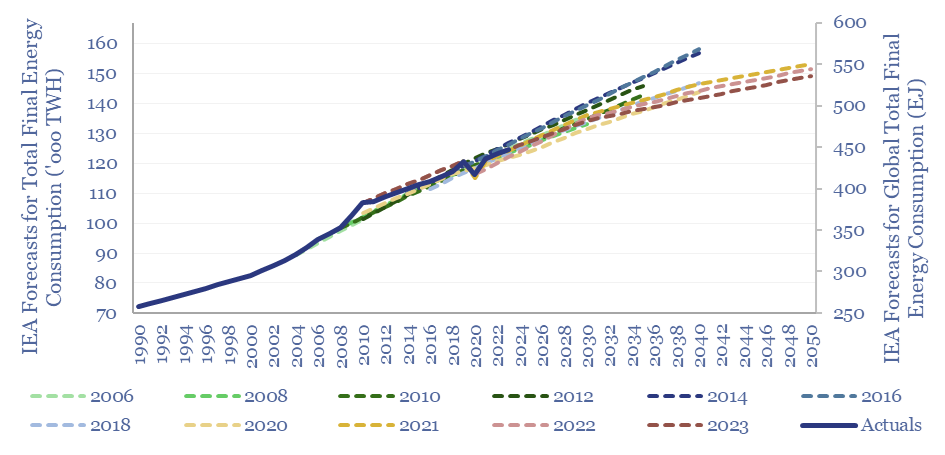
Global oil demand forecasts were overestimated prior to the global financial crisis, underestimated by an average of 1.2Mbpd from 2013-2018, then COVID de-railed 2017-19 forecasts for 2020-2025, while since 2021, estimates for 2025 have now been revised up by a full 1Mbpd.
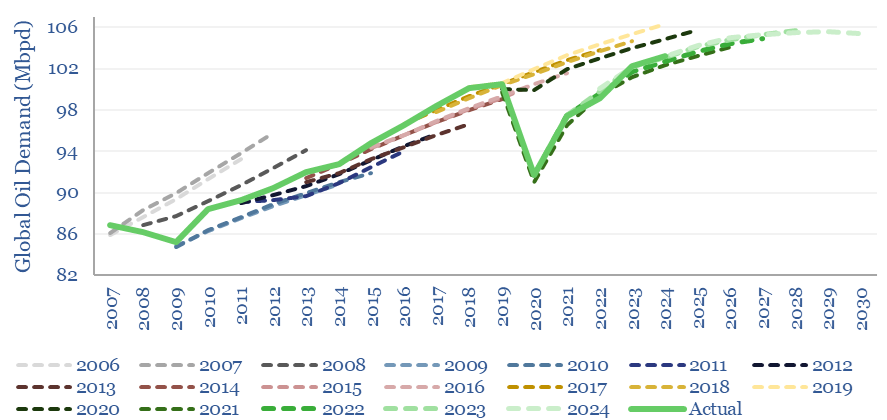
The adjusted error of the estimate for forecasting global oil demand is 0.6% per year. In other words, estimates of global oil demand in N-years’ time tend to suffer from a forecasting error of N x 0.6%. For example, the IEA’s average estimate for oil demand in 5-years’ time has tended to be almost 3Mbpd out in either direction.
Global coal demand forecasts were consistently overestimated by about 5% from 2009-2019, due to coal-to-gas switching and renewables. However, since 2020, the direction of errors has flipped over, and coal demand has been consistently underestimated. 2023 coal demand came in c10% higher than envisaged in 2018.
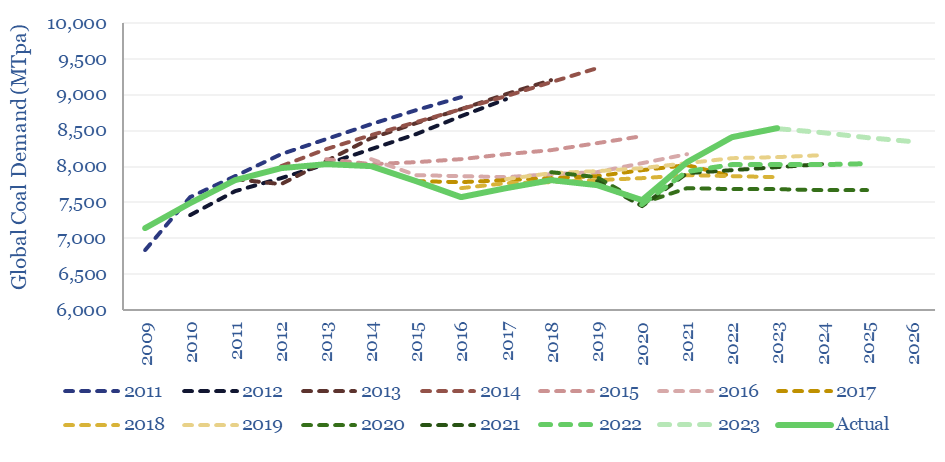
Global solar capacity additions have been most consistently under-estimated. On average, over the past decade, solar forecasts came in 1% above their 1-year prior forecasts, 30% above their 2-year prior forecasts, and 130% above their 3-year prior forecasts. However, expectations are now catching up? From 2019-23, solar additions actually missed 1-year prior forecasts by an average of 9%.
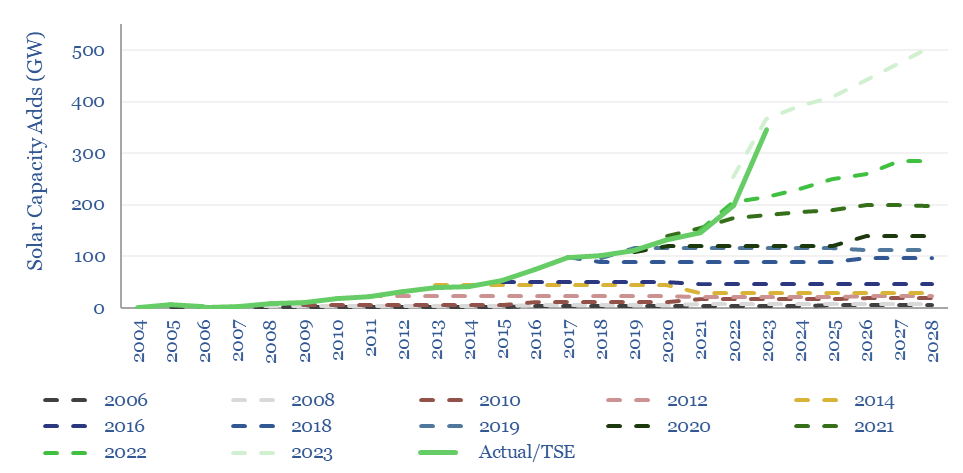
Global wind capacity additions have accelerated less aggressively than solar. They only doubled from 2015-2023, whereas solar additions rose 7x. On average, over the past decade, wind forecasts came in 1% above their 1-year prior forecasts, 15% above their 2-year prior forecasts, and 30% above their 3-year prior forecasts.
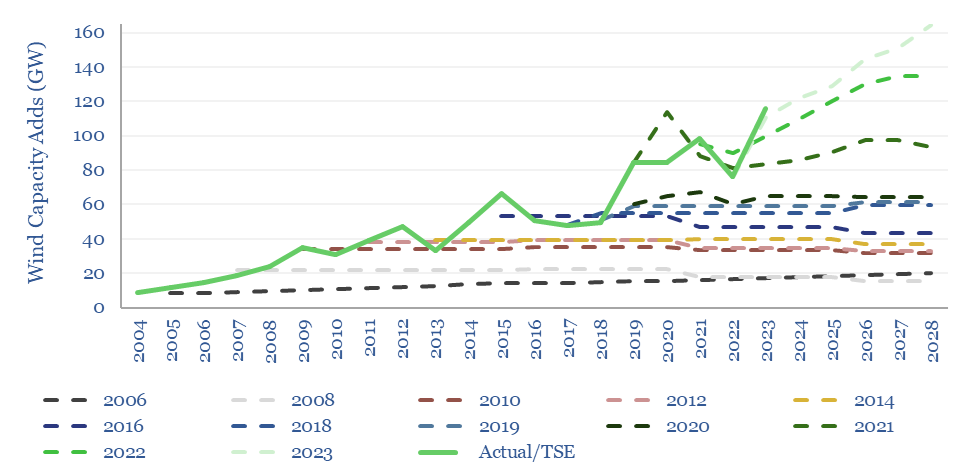
How accurate are energy demand forecasts? Please download the data-file to interrogate the numbers that have informed this analysis.
